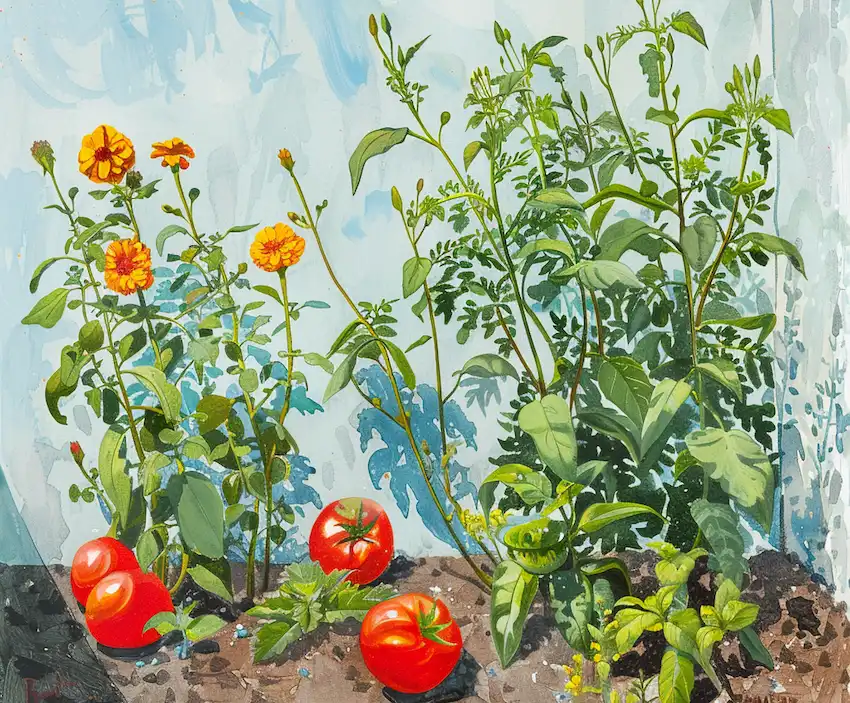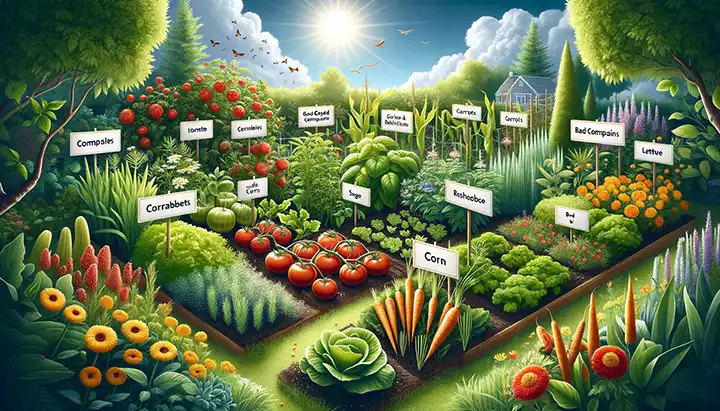Companion planting is an age-old practice that enhances garden productivity and health. By understanding which plants thrive together and which do not, gardeners can prevent pest infestations, improve pollination, and increase yields. This article delves into companion planting, providing a detailed table of good and bad companions for various vegetables and herbs, and concludes with a recipe that uses produce which can be grown together.
Understanding Companion Planting
Companion planting is based on the idea that certain plants can benefit others when planted in close proximity. These benefits include deterring pests, attracting beneficial insects, providing shade or support, and improving flavor and growth. Conversely, some plant combinations can be detrimental, leading to poor growth or increased pest problems.

The Companion Planting Table
Here’s a comprehensive guide to help you plan your garden layout:
Good Companions
- Tomatoes: Basil, Marigold, Carrots, Garlic
- Benefits: Basil repels flies and mosquitoes, improves growth and flavor. Marigolds deter nematodes.
- Carrots: Tomatoes, Leeks, Rosemary, Sage
- Benefits: Tomatoes repel carrot flies. Leeks repel carrot flies and vice versa.
- Lettuce: Strawberries, Cucumbers, Carrots
- Benefits: Strawberries and cucumbers provide shade, conserving moisture.
Bad Companions
- Tomatoes: Corn, Kohlrabi, Potatoes
- Drawbacks: Corn attracts tomato pests. Potatoes and tomatoes can spread blight.
- Carrots: Dill, Parsnips
- Drawbacks: Dill retards carrot growth. Parsnips compete for resources.
- Lettuce: Celery, Parsley
- Drawbacks: They compete for space and can attract slugs.
Implementing Companion Planting in Your Garden
When planning your garden, consider the following steps:
- Research: Look up companion plants for your specific crops.
- Layout: Design your garden beds or containers with companions in mind.
- Rotation: Rotate crops each year to prevent soil depletion and disrupt pest cycles.
- Observation: Keep notes on what combinations work best for future reference.

Recipe: Companion Plant Garden Salad
Celebrate the success of your companion planting with a fresh garden salad using tomatoes, lettuce, and carrots. Here’s how to make it:
Ingredients:
- Fresh lettuce leaves
- Cherry tomatoes
- Carrots
- Basil leaves (optional)
- Olive oil
- Balsamic vinegar
- Salt and pepper
Instructions:
- Prepare the Vegetables: Wash and dry the lettuce leaves. Slice the cherry tomatoes in half. Peel and grate the carrots.
- Assemble the Salad: In a large bowl, combine the lettuce, cherry tomatoes, and grated carrots. Tear a few basil leaves and sprinkle them over the top for an extra flavor boost.
- Dress the Salad: Drizzle olive oil and balsamic vinegar over the salad. Season with salt and pepper to taste.
- Serve: Toss the salad gently to combine the ingredients and dressing. Serve immediately.

Companion planting is a valuable skill that can enhance the health and yield of your garden. By following the guidelines provided in the companion planting table and experimenting with what works best in your garden, you can create a thriving, productive space. Remember, gardening is a learning process, and companion planting is just one of many tools at your disposal. Enjoy the fruits (and vegetables) of your labor with delicious, home-grown meals like the garden salad recipe provided. Happy gardening!
